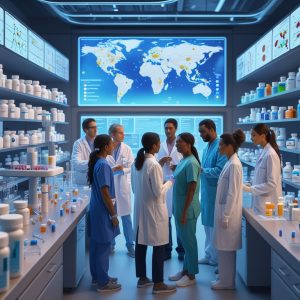
Pharmaceuticals play a crucial role in modern healthcare, transforming the way we treat diseases and improve overall well-being. From life-saving medications to therapies that manage chronic conditions, the pharmaceutical industry is at the forefront of driving innovation in health. However, in order to fully harness the power of pharma for optimal health, it’s essential to consider not only the effectiveness of drugs but also their accessibility, safety, and integration into broader healthcare systems.
The Promise of Pharmaceuticals in Healthcare
The primary aim of pharmaceutical products is to cure diseases, alleviate symptoms, and improve the quality of life for patients. Over the years, the development of antibiotics, vaccines, and specialty medications has significantly increased life expectancy and decreased mortality rates globally. Breakthroughs in the treatment of diseases such as cancer, diabetes, and cardiovascular conditions have been largely due to advancements in pharmaceuticals, providing hope to millions of patients who previously had limited options for treatment.
Pharmaceutical innovations have also improved preventative care. Vaccines, for example, have eradicated or drastically reduced the incidence of life-threatening diseases like polio, smallpox, and measles. Similarly, medications for managing chronic conditions like hypertension, asthma, and arthritis enable people to live fuller lives despite ongoing health challenges.
Ensuring Access to Medications
While the power of pharma is clear, ensuring that these medications are accessible to all individuals is a significant challenge. Global disparities in healthcare access mean that not everyone benefits equally from pharmaceutical advances. In high-income countries, access to the latest drugs is generally more available, but in low-income regions, issues like affordability, distribution, and healthcare infrastructure hinder access.
Pharmaceutical companies and governments alike must prioritize initiatives aimed at improving access to essential medicines. This can be achieved through measures like pricing reforms, international collaborations, and investment in healthcare infrastructure. Additionally, initiatives such as generic drug production and public-private partnerships can help reduce costs and increase availability, particularly in underserved populations.
The Role of Safety and Regulation
The safety and regulation of pharmaceuticals are integral to their effectiveness in promoting optimal health. Regulatory bodies like the U.S. Food and Drug Administration (FDA), the European Medicines Agency (EMA), and others play a vital role in ensuring that drugs meet rigorous safety and efficacy standards before they reach the market. These agencies oversee clinical trials, monitor post-market safety, and provide guidelines for proper drug use.
The effectiveness of pharmaceuticals is closely tied to their safe use. Adverse reactions, drug interactions, and misuse can undermine the benefits of medications. Patient education, transparent labeling, and healthcare provider guidance are essential to maximize the positive impact of drugs. The recent rise of personalized medicine, where drugs are tailored to an individual’s genetic makeup, also helps minimize risks and optimize therapeutic outcomes.
The Future of Pharma and Optimal Health
As we look to the future, the potential for pharmaceuticals to improve global health is even greater. Advances in biotechnology, gene therapy, and precision medicine are paving the way for treatments that target the root causes of diseases at the molecular level. These innovations could lead to cures for previously untreatable conditions and help prevent diseases before they develop.
Moreover, digital health tools and telemedicine are increasingly being integrated with pharmaceutical care. Remote monitoring, AI-driven drug development, and virtual consultations enhance patient care and create a more integrated healthcare experience, ensuring that pharmaceuticals are used effectively to improve long-term health outcomes.